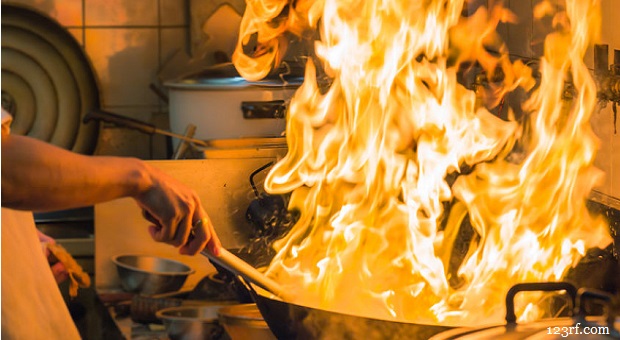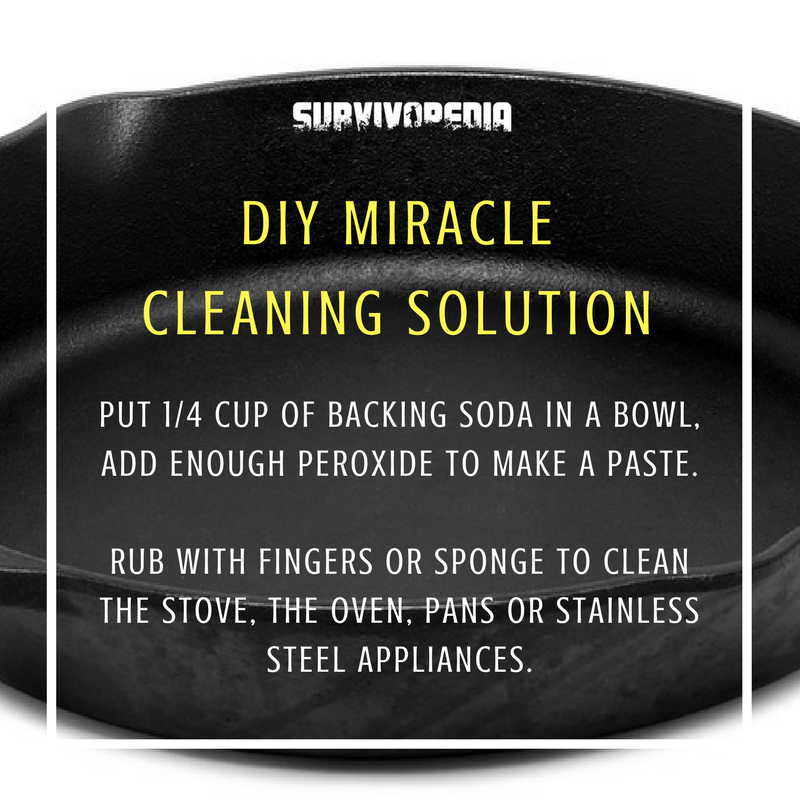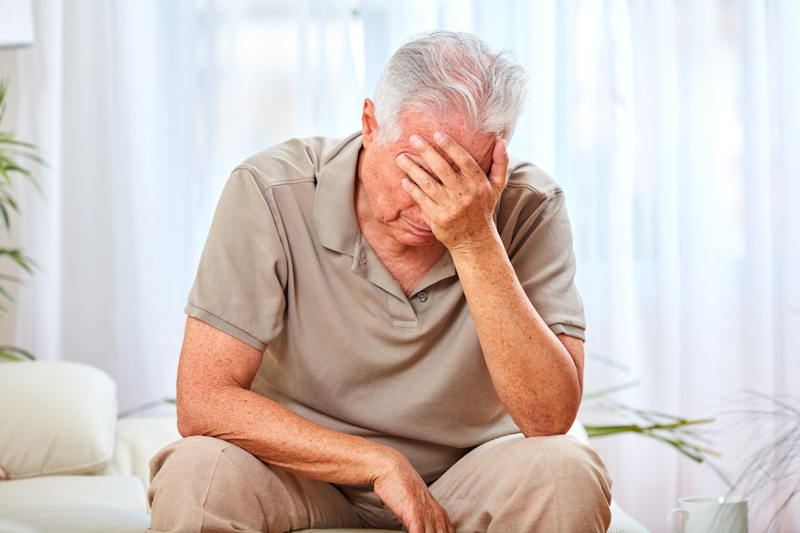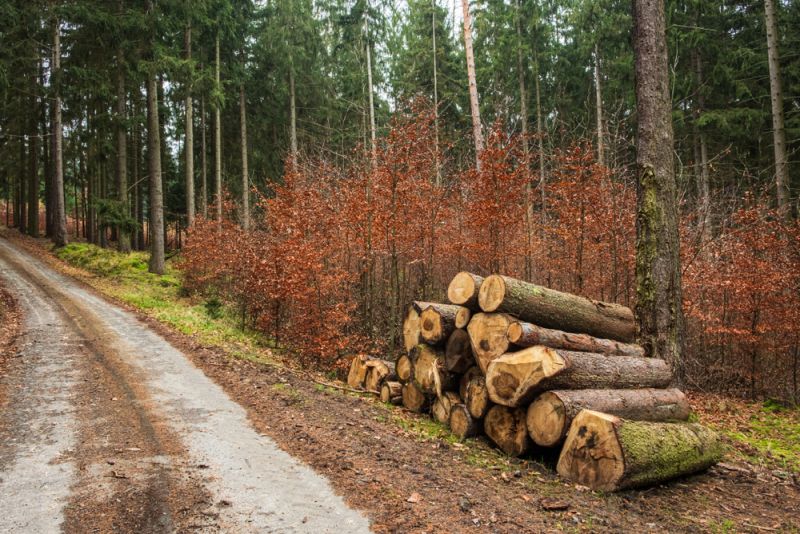Whether you cook a little or a lot, you’re eventually going to have some sort of kitchen disaster. It may be a fire, or you may just burn the cookies or put too much salt in the soup.
Relax, because we’re going to talk about the solutions to many of these problems over the next paragraphs.
Keep reading!
1. Kitchen Fire
Fire is a tricky thing, especially in the kitchen, or if you’re cooking on a wood fire. Most of the time, the fires isn’t started by burning food, but rather by burning oil. And throwing water on an oil fire is a bad thing, to say the least.
Video first seen on KCCI.
You should always keep a fire extinguisher in the kitchen or in your camper but if you don’t have one handy, at least have salt or flour.
It’s a huge mess to clean up, but either will smother a fire – flour is better than salt – and a mess on the stove is much better than a burned-down house, camper, or forest.
2. Burned Coffeepot
We’ve all done it – forgotten to turn off the coffeepot. When you do that when there’s just a tad left in the bottom, it’ll burn into a crunchy, caramelly mess. And since you can’t get your hand down in there, how are you supposed to clean that?
Easy, actually! Drop some ice cubes in there, then sprinkle salt in over the ice and swirl it around. In just a few swirls, you’ll see a noticeable difference and it won’t take more than a minute to have it all cleaned off.
3. Burned Pan
I’m a baker. I’m also extremely busy and tend to rabbit trail, especially when I’m on a deadline, have company coming, have to clean my house, and need to take the dogs out all within the same 10-minute span. Needless to say, dinner is occasionally burned.
That means that your saucy, delicious lasagna is now a baked-on caramelly mess on your glassware. There’s no need to throw it away a perfectly good pan, though. Depending on the type of pan you’re using, you can just soak it in hot water, scrub it, and call it done.
This is perfectly fine for cast iron, stainless steel, copper, or aluminum. If you’re using Teflon, this won’t work, though. Yet another reason I avoid Teflon.
If it’s particularly stuck on, put water in the pan and warm it up on the stove or in the oven, whichever is appropriate, then, while it’s still warm, use a spatula to scrape the bottom and sides. Again, this won’t work on Teflon.
4. Baking Gone Wrong
Baking isn’t like cooking – it’s serious chemistry. Ingredients work together to form chemical reactions that determine whether it rises, whether it’s light and fluffy, dense, crispy, or soft and chewy.
If you don’t use the right combination or the right ingredients, or if they’re old, you’ll have brownies that turn to cake, cake that turns to brownies, biscuits that break windows, and cookies that fall apart when you pick them up.
So, know your ingredients. Also, always use fresh ingredients and follow directions. Now that we’ve said that, how can you fix baking errors? Well, really, you can’t. If it’s important, I always do a small test batch to see if the recipe is good and to make sure that my ingredients are fresh.
This Timeless Collection of Forgotten Wisdom Will Help You Survive!
A few hints to prevent baking from going wrong:
- Let butter soften naturally because it and your sugar, and possibly eggs, work together to form the structure of the cookies or cakes. The sugar creates air pockets in the butter, then they’re filled with flour and CO2 from baking soda.
- The process of kneading activates the gluten proteins in flour. This is a good thing when you’re using yeast in breads, but a horrible thing when you’re making biscuits or cookies that have no yeast. Handle them as little as possible.
- Set your timer for a couple of minutes before what the recipe says. If your oven cooks hotter than what it should even by a few degrees, those couple of minutes will be the difference between done and burned, especially with cookies or breads of any sort.
- Let your eggs come to room temperature before you add them to your recipe. There are a few different reasons for this depending on the situation, but it’s always a good idea.
- Cream your butter and sugar before anything else for a lighter, fluffier texture cookie or cake.
- Always measure when baking. You can get away with a pinch of this and a shake of that when you’re cooking, but not when you’re baking. The only change that it’s really ok to make is to back the flour off a couple of tablespoons (up to 1/4 cup) in cookies to make them moister.
5. Too Much Salt
Oh my goodness! You’ve just tasted your soup and realized it’s WAY too salty. The best way to fix this is to taste, then add a little, then taste again because you can always add more, and it will get saltier the more it cooks down.
Taking it out is sometimes another story. If you’re making soup or something liquid, it’s a fairly easy fix as long as you still have some cooking time left. Just peel a potato, cut it in a few pieces, and toss it in. It will absorb the extra salt, and when your meal is done, toss it.
Supposedly, recent reports show that this doesn’t work, but it always has for me.
Another option if you have some cooking time left is to simply take out some of the liquid, then add more in. I always keep some chicken and beef broths in the pantry just in case this happens. You can also buy veggie broth in case it’s for a vegetable soup.
Random Tips
These are just one-offs that may help.
Make sure you’re using the proper container for the proper appliance. Some pans are good for the oven and microwave, but not the stove, and vice versa. You’ll only blow up one Pyrex pan by leaving it on a too-hot stove to learn this lesson.
To skim fat off the top of a sauce or gravy (or even soup) skate a couple of ice cubes across the top. The grease will stick to it, or at least stiffen, and you can scoop it right out.
And finally, don’t rub grease on a burn, no matter how many old wives tales you hear. It holds the heat in and actually makes the burn worse. As long as the skin is closed, run it under cold water, then but some burn cream or Aloe Vera on it.
There isn’t such a thing as being totally safe even in your own home, because small disasters can and would happen. Be prepared to face them too, and think about them as a small rehearsal for the bigger game! Learn the tips and train your skills to find the best way to solve them too!
Do you have any other good suggestions about how to help with kitchen disasters? If so, please share them with us in the comments section below.
This article has been written by Theresa Crouse for Survivopedia.











Bill in Idaho | November 19, 2017
|
CAREFUL, Theresa C. If you think throwing Water on any Oil Fire is bad – Try throwing a handful of flour on it – the Scattered Flour Dust is more Damaging than Black Gunpowder ! ! ! DANGER ! WARNING !
Deborah McBride | November 19, 2017
|
You are so right. Flour dust fires were one of the worst dangers in old time mills (before the advent of sprinkler systems, and other modern safety gear) and still ARe a danger today.
jason smith | November 19, 2017
|
Grease fires are caused by letting oil get too hot, so the best way to prevent them is to never leave your kitchen unattended. Oil smokes before it burns, so if you see your pan start to smoke, take it off the heat before it has a chance to catch fire.
http://knifearmory.ecrater.com/
Elguard | November 20, 2017
|
Aloe for burns is good, if you have it. Straight vinegar returns the acid mantle to your skin after a burn. If the smart is still felt, have a small container of ACV or another kind, & continue to wet down the burned area until it is no longer is sensitive.